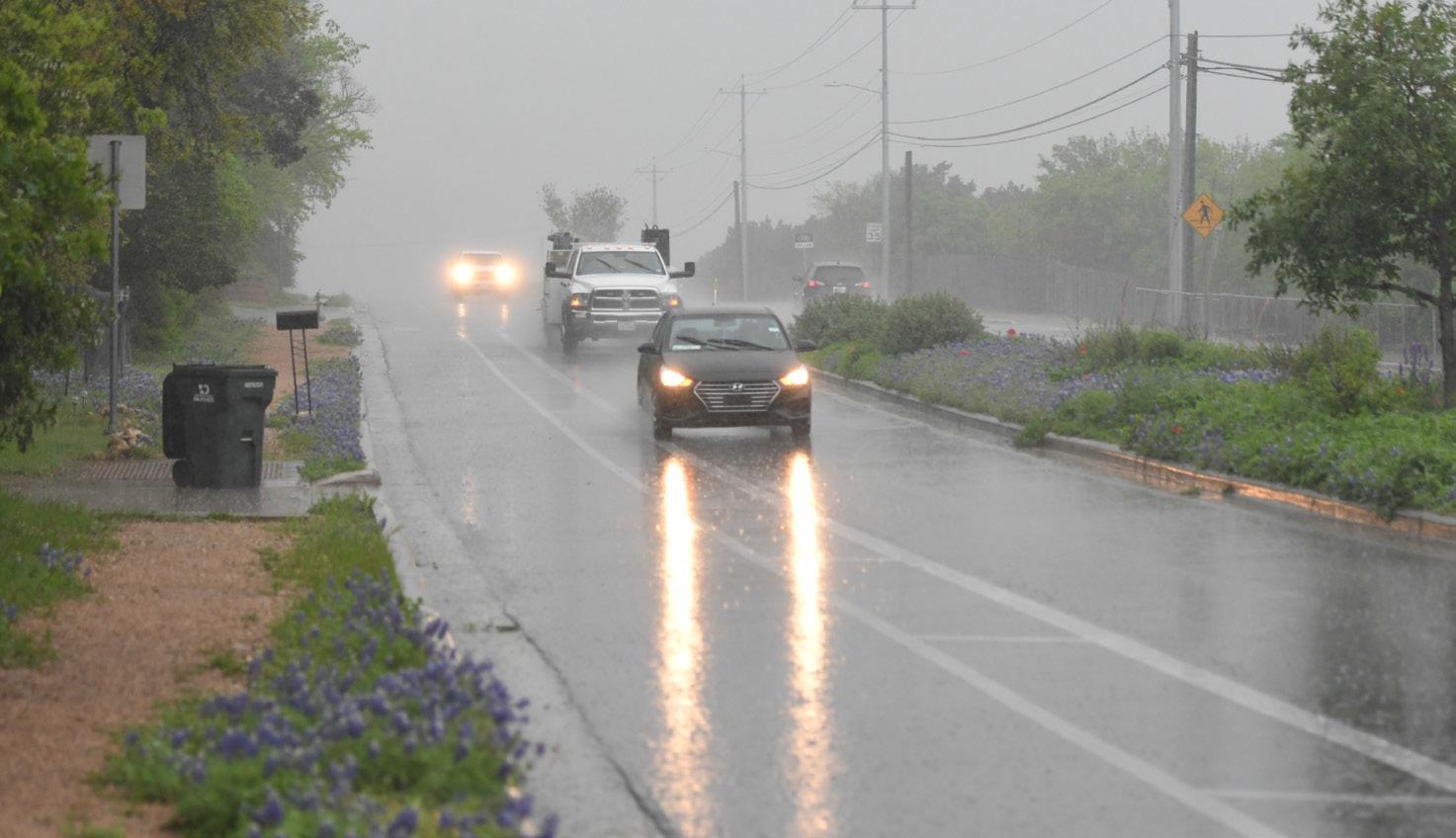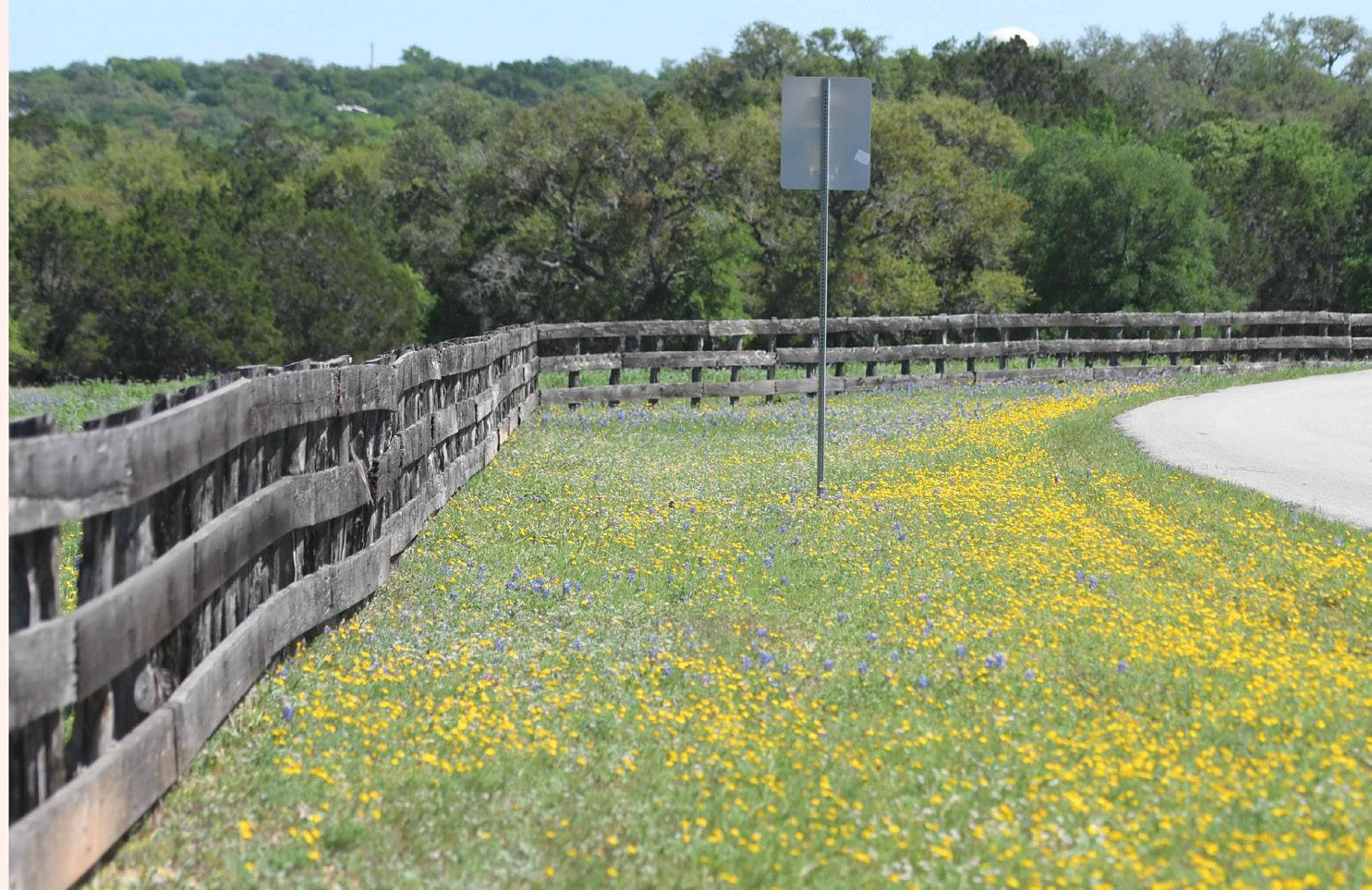

Above, the county has experienced rain days which have alleviated some drought and is bringing wildflowers earlier this year; below, this year there is a bounty of bluebonnets and other flowers.
Daily Record photos by Gerald Castillo
Spring weather comparison shows more rain is affecting vegetation
Central Texas is an area known for its unique climate and varied weather patterns. In the spring, the region experiences a shift in temperature and rainfall that can dramatically impact the environment and those who reside here. The Central Texas spring of 2022 was a time of mild temperatures and average rainfall, while the Central Texas spring of 2023 promises to be a stark contrast with high levels of precipitation and potentially severe weather events.
In the spring of 2022, Central Texas experienced mild temperatures and average rainfall. The low temperature was around 55°F, and the high temperature was around 80°F. Precipitation levels were around 2.5 inches, which is relatively standard for this time of year. Such mild temperatures and average rainfall prompted gardeners to start planting in late February.
However, the Central Texas spring of 2023 has been a little different; in the early parts of the spring the region experienced higher levels of precipitation, potentially severe weather events, and oddly warm temperatures earlier in the year. In the early months of the year, satellites detected unusually cooler water temperatures off the coast of South America that can lead to heavy rainfall in the Southern United States. This process is known as La Niña and can lead to colder temperatures and more precipitation.
But last month, sea-surface temperatures in that part of the ocean rose, scientists say, signaling the end of La Niña and the start of a new neutral climate pattern (this occurs when the sea-surface temperatures are at or near average). This neutral period may be short-lived: by summer, rising sea-surface temperatures could lead the opposing El Niño pattern to develop, according to NOAA’s Climate Prediction Center. By the fall, forecasters believe, there is a 62 percent chance El Niño will form.
The higher levels of precipitation in the Central Texas spring of 2023 could also lead to an increase in allergy-seasonal symptoms. The humid conditions will lead to longer and more pronounced pollen seasons, increasing the risk of allergies and irritation.
This year’s wildflower forecast is set to be an above-average year due to good fall rains and a wet winter. This wet dormant season allowed the seeds a chance to germinate. When the wet weather is combined with the warmth, the community had in February, you get the result of the wonderful bluebonnet crop the Hill Country has been graced with. As the area rolls into April look for other species of wildflowers to start flourishing as Central Texas heads toward peak wildflower blooming season.
While the Central Texas spring of 2022 was mild and had average rainfall, the spring of 2023 promises to be a time of significant differences. With higher levels of precipitation, the La Niña phenomenon could make 2023 a year of heavy rainfall, severe storms, and raised allergy symptoms. Central Texas residents should take note of the changes and prepare themselves accordingly to mitigate the risks associated with the change in the climate.
Aaron McCoy is a county extension agent for the Agriculture & Natural Resources for Texas A&M AgriLife Extension Service.











